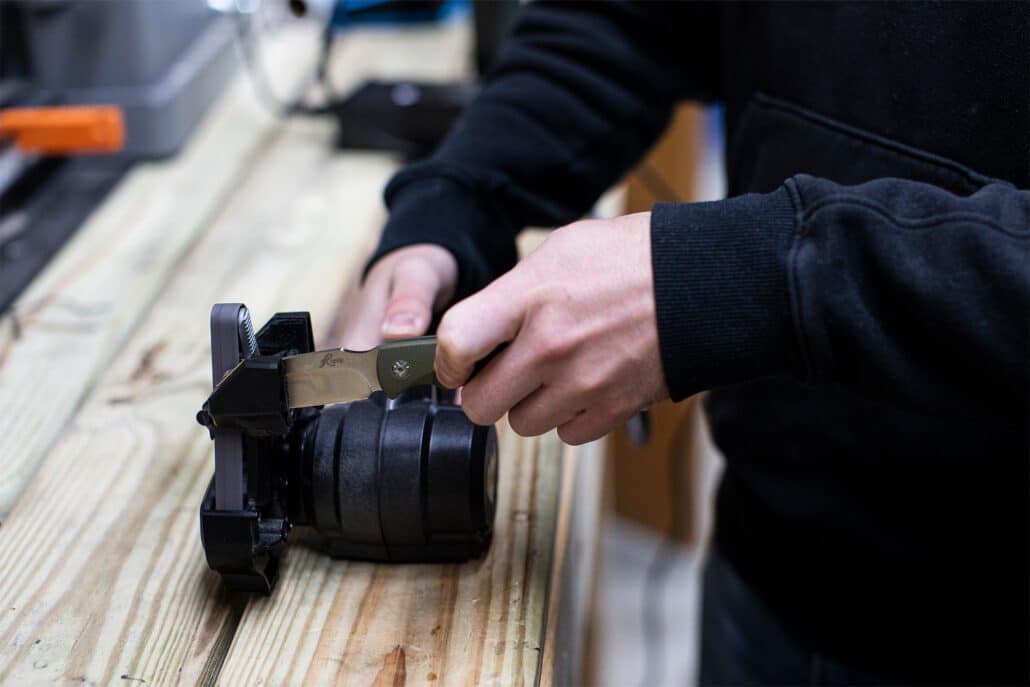
A razor-sharp knife can slice through meat and other materials with precision, but a blade dulled by months of abuse is not only less efficient — it can also be a safety hazard. Sharpening a well-used knife is a quick, affordable way to extend the life of your investment and ensure you’re getting peak safe performance.
If your knife can’t easily slice through a piece of paper or the skin of a tomato without squishing it first, it’s due for sharpening.
While the best way and frequency can vary based on individual knife construction, you’ll generally sharpen blades using one of these methods
Manual Knife Sharpener
Also known as a pull-through sharpener, a manual knife sharpener offers the simplest way to get your blades back in cutting shape. It’s designed with two slots: one with a coarse grit for sharpening, one with a fine grit for polishing.
To use a manual knife sharpener, simply pull the blade from heel to tip through the coarse slot, applying even pressure. Repeat this process about three to six times or a few more for duller knives. Then pull the blade through the polishing slot a couple times.
Electric Knife Sharpener
Featuring similar coarse- and fine-grit slots to manual sharpeners, electric knife sharpeners also sport motorized wheels that spin these abrasive surfaces against the blade, making them more powerfully precise.
To use an electric knife sharpener, pull the blade though the coarse slot slowly three to six times. Then repeat this process, focusing on the other side of the blade. Next, pull the blade through the polishing slot a couple times and repeat the process for the other side of the blade. You can repeat all steps until the knife is back to its original sharpness.
Whetstone
A whetstone, or sharpening stone, is a rectangular block with a coarse grit on one side and a fine grit on the other. It offers the most precision of any sharpening method.
To sharpen a knife with a whetstone, first check with the manufacturer to determine the correct sharpening angle to use — usually 15-20 degrees. You may also need to lubricate the whetstone with a bit of mineral oil beforehand too. Submerge your whetstone in water for 5-10 minutes until it’s completely saturated and creates no more air bubbles. Then place the coarse side of the whetstone up on a countertop. Set the edge of the knife on the stone at the recommended angle with the blade facing away. Grab the handle with one hand and put the other hand on the flat side of the blade with a bit of pressure. Carefully drag the heel of the knife down the whetstone while maintaining the same angle until the tip runs off the edge of the whetstone. Repeat this process three to six times, looking for a burr (small bit of the metal that folds over the edge of the blade) to form. After the burr develops along the entire edge, repeat these steps on the other side of the knife. Then flip the whetstone over and repeat the entire process with the fine-grit side.








